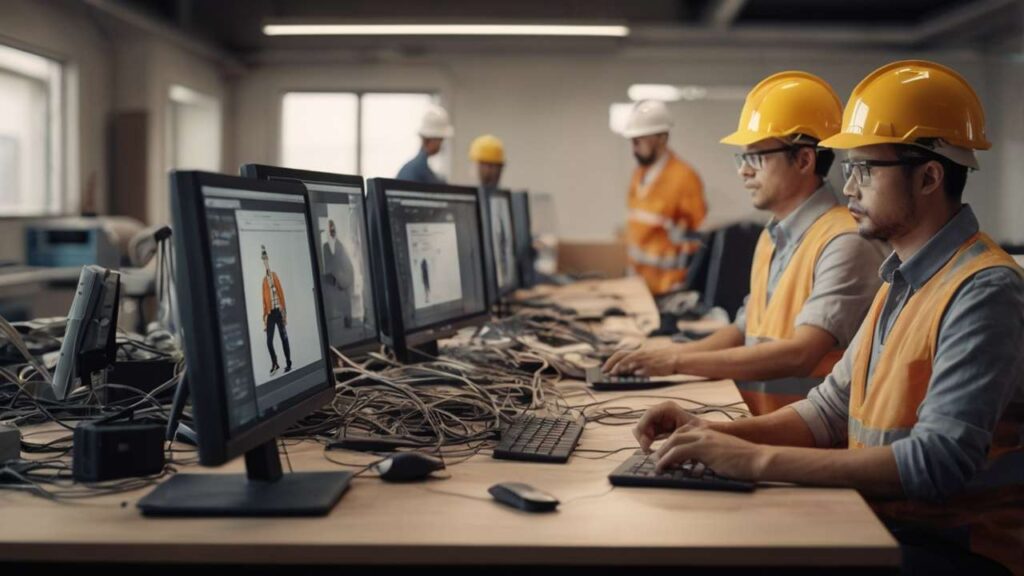It is often underestimated how much network cable selection impacts the daily experience of browsing, streaming, and working. I’ve personally seen offices where an expensive router was purchased, but because of a poor cable choice, the speed still crawled like it was 2005. The difference between Cat5e, Cat6, and Cat7 is not just marketing jargon—it really defines whether your business meetings run smoothly or freeze mid-sentence. Professional installers have warned many times that ignoring cable durability and installation methods can create headaches later. And that’s why people searching for the best ethernet cable for office setups should pay close attention not only to speed but also to how the entire network installation process is designed.
I once visited a small design studio in Raleigh where their Cat5e cables had been serving for years, but after moving to cloud-based editing tools, the team noticed massive lag. Their trusted IT specialist suggested upgrading to Cat6. Not just replacing wires but also advising a proper network switch setup and router placement for better Wi-Fi coverage. The change? They almost felt like a new office had been born overnight. This is a simple case study showing how network cable selection combined with reliable installation can turn frustration into relief. For readers who want a more complete guide, there’s a detailed reference at Pro Service Tips explaining reliable network setup installation practices that have worked for local companies.
Cat5e vs Cat6 vs Cat7 Explained with a Human Lens
Technical explanations often feel too stiff, but here’s a more real-world view. Cat5e is cheap and flexible, capable of supporting up to 1 Gbps under short runs. It’s fine for home use if you’re mostly streaming Netflix or working on Word docs. Cat6, however, is a sweet spot for most small to medium offices—it handles 10 Gbps for up to 55 meters. In my opinion, this is the cable that feels like the “Honda Civic” of networking: not flashy, but extremely reliable. Cat7, on the other hand, is the luxury pick. Shielded, fast (up to 10 Gbps at 100 meters), but sometimes overkill unless you’re running a data-heavy setup like video editing suites or professional gaming hubs.
A trusted expert, Mark Davidson—who has been installing enterprise networks for 20 years—once said, “Most people don’t need Cat7, but the ones who invest in Cat6 installation rarely regret it. It’s durable, it’s tested, and it just works.” I couldn’t agree more. And remember, testing your cable speed after installation is as important as the installation itself. I’ve made the mistake of assuming everything was fine only to discover a weak connection from a poorly crimped connector.
Why Cable Durability and Installation Quality Matter
Think of cables as the veins of your internet system. If they break, the body collapses. Cable durability isn’t just about whether the wire bends or not; it’s about whether it maintains consistent performance for years. I once had to repair an office cable run because cheap connectors corroded inside the patch panels. The repair process required cutting the wire back, re-crimping with professional tools, and then neatly organizing the cables again in the rack. It wasn’t just a technical job—it was a lesson that buying trusted, reliable components saves more money in the long run.
The network setup category offers plenty of resources that expand on related components such as patch panels and switches. These are not accessories—they are critical parts of ensuring that every device gets its fair share of stable bandwidth. A network switch setup that is done poorly will lead to endless troubleshooting connection issues, even if you’ve invested in the fastest internet cable money can buy.
The Network Installation Process in Practice
People often imagine network installation as drilling holes and dragging wires, but it’s more layered than that. Professionals will start with planning: assessing router placement, measuring distances, checking interference zones, and considering future upgrades. For instance, if you lay Cat6 today but don’t think about how many devices will be connected tomorrow, you might regret not planning for a stronger switch or better patch panel. The installation process also requires testing tools—cable testers, punch-down tools, RJ45 crimpers, and labeling kits. I once helped a friend who thought his slow network was a “router problem” only to find two pairs inside the cable were never punched down correctly. Sometimes small mistakes like that cost weeks of headaches.
For those interested in understanding the backbone of such reliable setups, Pro Service Tips shares professional insights not only on installation but also on practical repair tips. I particularly like how they stress not only speed but the emotional relief of having a connection that “just works” without nagging drops.
Additional Angles That Keep Expanding the Topic
Besides router placement & Wi-Fi coverage, network switches & patch panels, troubleshooting connection issues, and the network installation process, readers might also find value in exploring related angles like cable management aesthetics (which actually matter for airflow and safety), eco-friendly cable recycling, and even cybersecurity basics tied to wired connections. One overlooked subject is surge protection for cables—because lightning or power spikes don’t just damage routers but can fry long cable runs too. Another valuable area is hybrid setups combining wired and wireless to cover tricky office layouts. These aren’t side notes—they are part of a complete networking conversation that any trusted resource should cover.
Real Case Study: Office Transformation with Cat6 Installation
A mid-sized marketing company in North Carolina struggled with unstable video calls and endless file transfer delays. Their IT partner proposed a Cat6 installation guide that included not only cable upgrades but also professional router placement adjustments. After implementing it, employees reported that large creative files uploaded in minutes instead of hours. The CEO even admitted, “I didn’t realize how much time we wasted on waiting screens until it was gone.” This is the kind of before-and-after transformation that shows how important network cable selection really is.
FAQs
What is the best ethernet cable for office use?
Cat6 is generally the best balance of speed, cost, and durability for most offices. It supports 10 Gbps speeds on shorter distances and offers stronger shielding than Cat5e.
How can I test if my network cable is performing correctly?
You can use a cable tester to check connectivity and data flow. Some advanced testers also measure speed performance. Even simple plug-in testers can help spot wiring issues.
Do network switches and patch panels improve speed?
They don’t directly increase internet speed, but they ensure stable distribution and reduce bottlenecks, especially when many devices are connected.
A network is only as strong as its weakest link, and in most offices, that weak link is often the cable nobody thinks about. Choosing the right type, investing in durable parts, and ensuring professional installation pays off both financially and emotionally. If you found this guide useful, please share it on your social media using the share buttons below—your colleagues and friends might thank you later.



